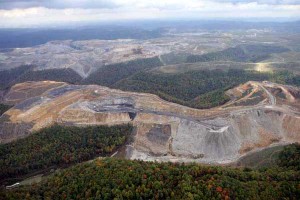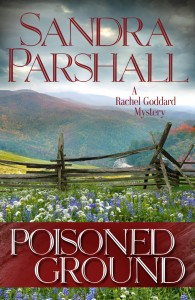 Relevant History welcomes Sandra Parshall, the author of six Rachel Goddard mysteries, set in current-day Virginia. Her 2006 debut, The Heat of the Moon, won the Agatha Award for Best First Novel. Her latest title is Poisoned Ground (March 2014). A longtime member of Sisters in Crime, she has served on the national board and managed the SinC members online community for many years. She lives in Northern Virginia with her husband, Gerald Parshall, a veteran Washington journalist. For more information, visit her website.
Relevant History welcomes Sandra Parshall, the author of six Rachel Goddard mysteries, set in current-day Virginia. Her 2006 debut, The Heat of the Moon, won the Agatha Award for Best First Novel. Her latest title is Poisoned Ground (March 2014). A longtime member of Sisters in Crime, she has served on the national board and managed the SinC members online community for many years. She lives in Northern Virginia with her husband, Gerald Parshall, a veteran Washington journalist. For more information, visit her website.
*****
The fight over a development project in my latest novel, Poisoned Ground, mirrors events taking place throughout the U.S. today, but for Appalachia it’s nothing new. The history of the southern mountains—southwestern Virginia, West Virginia, eastern Kentucky and Tennessee—where my series is set, is a long, sad tale of exploitation and degradation, with large corporations protected by government as they forced people off their land and destroyed the environment in pursuit of natural gas, timber, and above all, coal.
When big companies moved into Appalachia in the nineteenth century to exploit its mineral wealth, they paid farmers and homesteaders a pittance for “mineral rights” and assured them they would continue to own the surface land. However, the contracts authorized the companies to do whatever was necessary to extract the minerals, and that usually meant making the surface land uninhabitable for its “owners.” Corporations, which literally owned entire towns, put friendly politicians into local and state offices, and legislatures traditionally defended the companies against complaints and attempts at regulation.
Until the mid-20th century, underground coal mining provided the most secure employment for the men of Appalachia, although those jobs came at a huge cost to personal health: lung disease, injured backs, the constant specter of possible death in a cave-in or a fire ignited by a gas explosion. As many deep underground mines played out, companies increasingly went after the coal in seams inside the towering mountains.
 (Photo credit: National Resources Defense Council) Strip mining had been practiced for a hundred years, but in the 1970s a method even more devastating was adopted: mountaintop removal mining (MTR). The tops of the mountains are blown apart with explosives, and the resulting rubble is bulldozed out of the way. Today more than a million acres and more than 500 mountains, once densely forested havens for wildlife and people alike, have been reduced to wasteland by MTR mining, surrounding homes are buried under rubble, and streams run red with toxic chemicals draining from mine sites.
(Photo credit: National Resources Defense Council) Strip mining had been practiced for a hundred years, but in the 1970s a method even more devastating was adopted: mountaintop removal mining (MTR). The tops of the mountains are blown apart with explosives, and the resulting rubble is bulldozed out of the way. Today more than a million acres and more than 500 mountains, once densely forested havens for wildlife and people alike, have been reduced to wasteland by MTR mining, surrounding homes are buried under rubble, and streams run red with toxic chemicals draining from mine sites.
Times have changed, and citizens have risen up in protest against this wholesale destruction of the region, but so much damage has been done that no hope remains of returning the mountains to anything resembling their former pristine beauty. The cherished jobs are vanishing along with the landscape as machines replace men. Only two percent of Appalachia’s population is now employed in mining.
In the past the Melungeon people—who would have been ancestors of some of my characters—suffered in additional ways. Because they were mixed race and denied the rights of pure Caucasians, Melungeons were unceremoniously relieved of their farmland by any whites who wanted it, and were pushed up onto the highest, poorest mountain ridges to eke out a living. Many left the region in hope of better lives elsewhere, and to a large extent the group lost its identity until recent years, when people of Melungeon heritage began to rediscover their roots.
In today’s world we have civil rights laws to protect racial minorities, but landowners are still in for a battle when a big company sets its sights on their property. The U.S. Supreme Court has ruled that local governments can take private land by imminent domain and turn it over to corporations if the planned development will benefit the larger community’s economy. Individual property owners have no choice but to yield.
 (Photo credit: Sandra Parshall) The plot of Poisoned Ground was inspired by Disney’s attempt in the 1990s to turn 3,000 acres of Virginia countryside into a massive theme park and housing development. A little community named Haymarket was at the center of the controversy. Family farms still exist out that way, a short driving distance from Washington, DC, in the foothills of the Blue Ridge and within the Appalachian geographical region. Because of its proximity to the nation’s capital, Disney thought the Haymarket area was the ideal spot for “Disney’s America,” which would supposedly celebrate our history while providing the usual moneymaking components of an amusement park.
(Photo credit: Sandra Parshall) The plot of Poisoned Ground was inspired by Disney’s attempt in the 1990s to turn 3,000 acres of Virginia countryside into a massive theme park and housing development. A little community named Haymarket was at the center of the controversy. Family farms still exist out that way, a short driving distance from Washington, DC, in the foothills of the Blue Ridge and within the Appalachian geographical region. Because of its proximity to the nation’s capital, Disney thought the Haymarket area was the ideal spot for “Disney’s America,” which would supposedly celebrate our history while providing the usual moneymaking components of an amusement park.
Like the community in my story, the people of Haymarket and the surrounding area were fiercely divided over Disney’s proposal. Many thought it was a great idea that would bring jobs and modern development to an area languishing in the past. An equal number were appalled by this threat to their peaceful way of life. They lived in the countryside because they loved it and wanted their children to experience it. Even if their own property were left untouched, the Disney theme park would bring millions of tourists into the county every year, clogging the narrow roads and destroying a cherished bucolic lifestyle. Committees were formed, raucous meetings took place, lawsuits were threatened. In the end it became obvious that a majority of the residents opposed the project, and Disney gave up.
The Disney battle tore the small community apart. To this day, anger and resentment persist, and when the press does follow-up stories, plenty of residents are willing to re-debate the issue.
An article in the Washington Post about lingering bad feelings made me wonder what would happen if a big company proposed an intrusive development in my fictional community, set in far southwestern Virginia where placid farms exist alongside surface mines and logging operations. In Poisoned Ground I explore the personal cost of such a controversy, as it tempts some residents with the promise of jobs or big payoffs for their land and threatens a way of life that others hold dear. Families are divided, neighbors become enemies, old grudges and bad memories rise to the surface again—and several people are murdered.
My story is fiction. But sometimes when I read the news I can easily imagine protest demonstrations and petitions turning violent as ordinary citizens try to hold back rampant development and keep what they thought was theirs.
*****
 A big thanks to Sandra Parshall. She’ll give away a hardcover copy of Poisoned Ground to someone who contributes a comment on my blog this week. I’ll choose the winner from among those who comment by Friday at 6 p.m. ET. Delivery is available within the United States and Canada.
A big thanks to Sandra Parshall. She’ll give away a hardcover copy of Poisoned Ground to someone who contributes a comment on my blog this week. I’ll choose the winner from among those who comment by Friday at 6 p.m. ET. Delivery is available within the United States and Canada.
**********
Did you like what you read? Learn about downloads, discounts, and special offers from Relevant History authors and Suzanne Adair. Subscribe to Suzanne’s free newsletter.




